The Chapel
A full of life sanctuary and a place of pilgrimage
The Chapel “Our Lady of the Good Council” was built in the beginning of the XXth century by the sisters of the Literary set and placed under the protection of Our Lady of the Good Council. In 1927, F. Charrière chose Saint Justin as protector of the OSJ. In the sixties, the Augustine-brothers transformed the chapel and gave a place to the holy defenders of the institution: Justin (side altar), Monique (stained glasses), Rita (side altar).
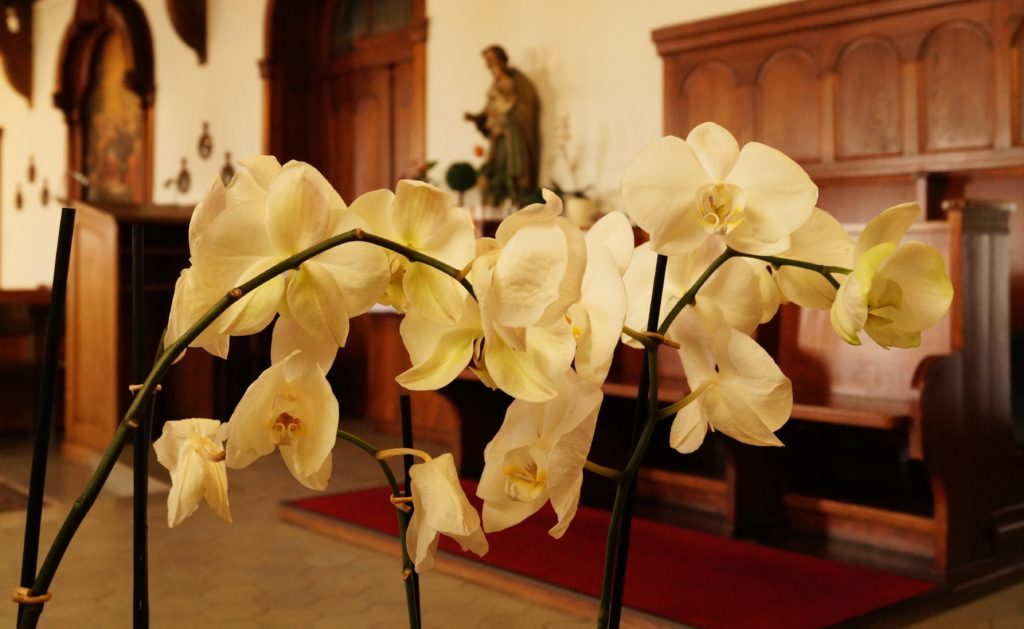
The Chapel “Our Lady of the Good Council” was built in the beginning of the XXth century by the sisters of the Literary set and placed under the protection of Our Lady of the Good Council. In 1927, F. Charrière chose Saint Justin as protector of the OSJ. In the sixties, the Augustine-brothers transformed the chapel and gave a place to the holy defenders of the institution: Justin (side altar), Monique (stained glasses), Rita (side altar).
The chapel is a full of life sanctuary and a place of pilgrimage.
The altar of saint Rita de Cascia attracts numerous believers, who bring flowers, small lights, and prayers. The mass on Thursdays at 8 am assembles about forty persons. During the day for St. Rita on May 22nd, about 400 pilgrims come from everywhere in Switzerland.

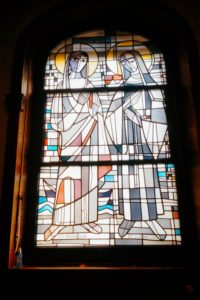
Besides the masses and ceremonies, the chapel is a place of celebrations, prayer and meditation, very busy at all times.
During the day, there are always people. Residents of the Cité St-Justin or persons from the outside come to get some peace and quiet.
Several priests, students with scholarships from the OSJ, even professors from the university come to celebrate the mass in French, in German or in their language with fellow countrymen in the oratory next to the sacristy.
The chapel is also open for many people for the Eucharist, the vespers moments of meditation and worship. Polish students come to celebrate their mass on Sunday evenings at 8:00 pm.
Members of the Vietnamese community have gotten used to celebrating the Holy Week in this chapel. Groups from African countries gather to organize special events such as baptisms, marriages, or death of family members.
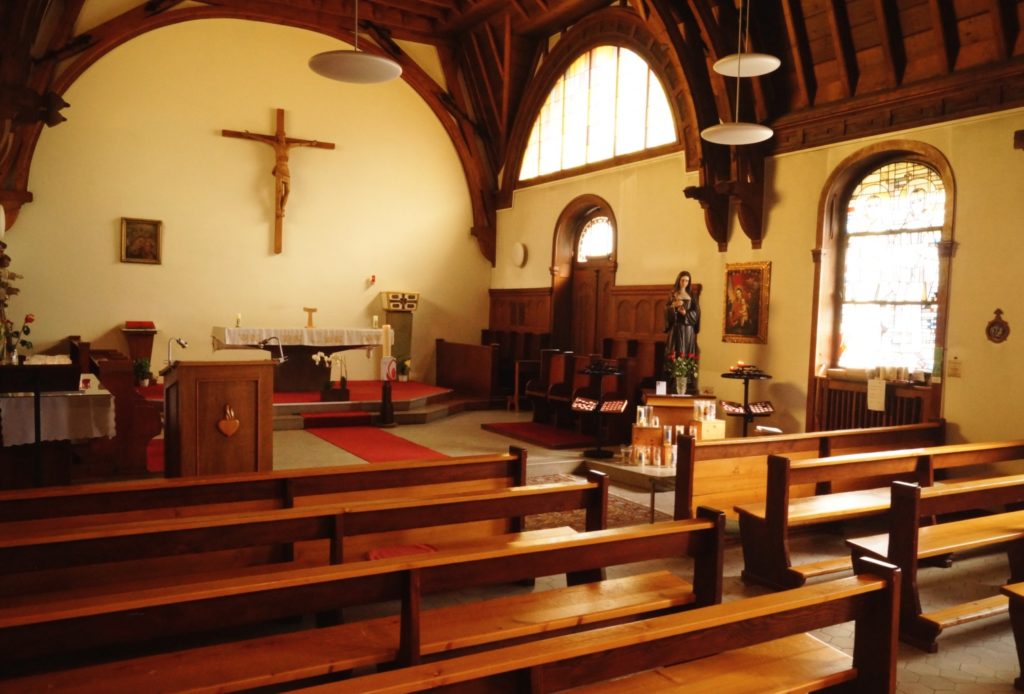
St. Justin
Justin was born around 105 in Sichem, also known as Nablus, in Palestine. His parents, Roman aristocrats, educated him it accordance with the heathen traditions. During his studies, he was interested in all the philosophic systems known at the time, but none was able to convince him. One day, he discovered the writings of the Jewish prophets as well as the texts of the Ancient and New Testament and he found faith in the Word of Christ. He was then christened and spread the Gospel everywhere he went.
Justin drafted numerous remarkable texts where he briskly defended Christianity. He hoped he could convert the heathen. Justin constantly rose against the persecution of Christians. He publicly accused the officials and condemned them. These statements led the respected philosopher to his end. He was arrested along with six of his pupils and thrown into jail. The prisoners were forced to serve the idols. As they refused, they were flogged and beheaded in public. Justin died in 165.
In his dialogs with the Jew Tryphon , based on a two-day conversation, Justin tries to create a bridge between Christianity and Judaism.
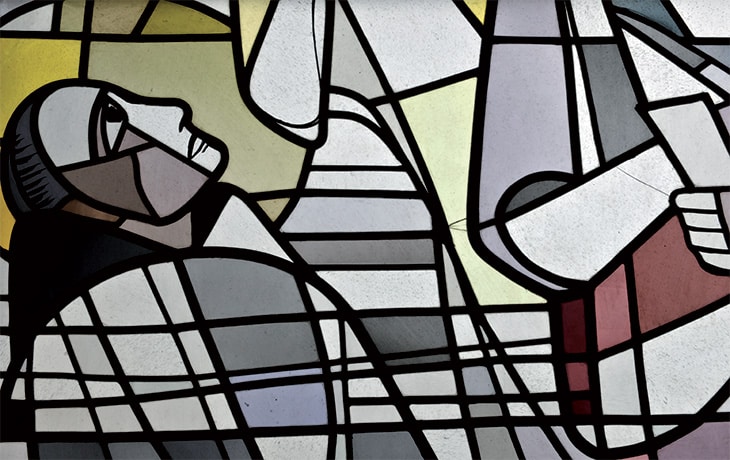
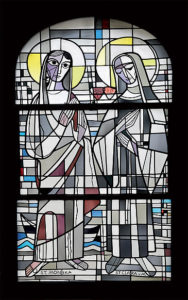
St. Monica
Saint Augustine’s mother was born in 332 in Tagaste, Africa. Her parents, who were Christians, married her to Patrice, the heathen magistrate, who was a choleric and impulsive man.
She gave birth to two sons, Aurèle Augustine and Navigius, as well as a girl named Perpetua. She gave them a Christian education, filled with deep love.
Augustine, the first born son, was very intelligent, but showed stubbornness and carelessness from a very young age. Monica prepared Augustine for the christening, but kept on delaying the event. Her hesitation was certainly due to her husbands influence, but also due to her son’s behaviour.
When the latter left for University of Cartago at the age of 17, Monica noticed that her son sank more and more into a life of debauchery. But she did not stop praying for her child and she often went to see him to urge him to follow a more Christian road.
Monica’s prayers were finally answered. After 14 years of distraction, Augustine found the truth of Christ and was christened by Ambrosius, on Easter of the year 387.
Augustine accompanied his mother to Ostia, where she wanted to continue her journey to return Africa. But Monica fell seriously ill and died some days later, in October 387.